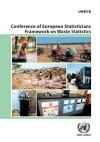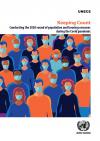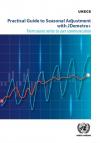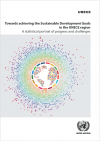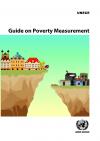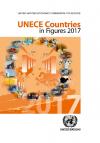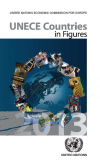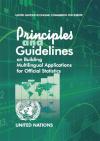Search
Displaying Results 1 - 20 of 65
- English
Official waste statistics have been produced for more than 40 years. They were initially developed to monitor and manage threats to human health and the environment. More recently, information needs have shifted toward realizing the economic value of waste, particularly in the context of the “
- English
When the Covid-19 pandemic broke out in March 2020, preparations for the 2020 round of population and housing censuses were well underway in countries across the UNECE region: some were already in the field, while the majority were in the advanced stages of planning for a 2021 census.
The impacts
- English
This Guide introduces seasonal adjustment and gives practical guidance to national statistical offices in producing seasonal adjusted monthly or quarterly time series covering all steps in the production process, from the evaluation of the original data series to the dissemination and communication
- English
The idea of viewing human knowledge and abilities as an asset and to estimate its value is not new but has gained more prominence in recent years. ln 2016, the United Nations Economic Commission for Europe (UNECE) published the "Guide on Measuring Human Capital"with the objective of
- English
Many countries and regions are facing two increasingly stark trends: rapid urbanization and a growing number of natural disasters caused by climate change-related hazards. Combined, they substantially increase the risk to which many people are exposed.
The increasing number and magnitude of
- English
This report reviews the situation and trends in progress towards the Sustainable Development Goals (SDGs) through the lens of 49 selected indicators under each of the 17 SDGs. Indicators were selected based on their relevance to the UNECE region and availability of data. For the most part, the
- English
Leading, composite and sentiment indicators make it possible for official statistics to shed new light on aspects of the economy and the society, for instance through compilation of leading indicators on the economic development or composite indicators measuring the well-being of households.This
- English
Official statistics are an indispensable element of the information system of democratic societies, serving governments, economies and the public with data that can help them understand and make decisions: about the economy, about the population, about society and the environment. An
- English
UNECE Countries in Figures presents a profile of social and economic indicators for each of the 56 UNECE member countries.These profiles, prepared by the UNECE Statistical Division, are intended to be of interest to readers not necessarily familiar with statistical terminology or with
- English
In a world where huge amounts of data are being generated all the time, and where citizens can look up almost anything they want, official statistics must stand out as a unique sourceof impartial and trustworthy information. The Fundamental Principles of Official Statistics – based on
- English
In the UNECE region, countries’ approaches to poverty measurement vary significantly. There is a large spectrum of poverty indicators, wide varieties of definitions, methods, thresholds and data sources that are not fully matched by national or international guidelines.This publication provides
- English
The 2nd edition of the Road Map, published in February 2022, can be found here.
The publication provides guidance to national statistical offices on producing statistics for SDGs. It lays out what needs to be done, who are
- English
UNECE Countries in Figures presents a profile of social and economic indicators for each of the 56 UNECE member countries.These profiles, prepared by the UNECE Statistical Division, are intended to be of interest to readers not necessarily familiar with statistical terminology or with
- English
The publication provides a recommendation and good practice guidance on a Generic Law on Official Statistics developed jointly with the European Free Trade Association and Eurostat as part of a broader UNECE statistical capacity building project financed through the United Nations Development
- English
The idea of viewing individuals’ knowledge and abilities as an asset—as human capital—can be traced back to the 18th century. But human capital is hard to define and measure. Policymakers are calling for ways to understand and quantify human capital, in order to better understand what
- English
UNECE Countries in Figures presents a profile of social and economic indicators for each of the 56 UNECE member countries.These profiles, prepared by the UNECE Statistical Division, are intended to be of interest to readers not necessarily familiar with statistical terminology or with
- English
UNECE Countries in Figures presents a profile of social and economic indicators for each of the 56 UNECE member countries. It also includes information about certain territories of UNECE member countries for which separate data are available.These profiles, prepared by the UNECE Statistical
- English
The move towards global standardisation in models such as the Generic Statistical Business Process Model (GSBPM) and the Generic Statistical Information Model (GSIM), combined with progress on the development of standards for exchanging data and metadata, has drawn the attention of statistical
- English
The degree of use of administrative sources in the statistical production process varies considerably from country to country, from those that have developed fully functioning register-based statistical systems, to those that are just starting to consider this approach.
Although several subject


